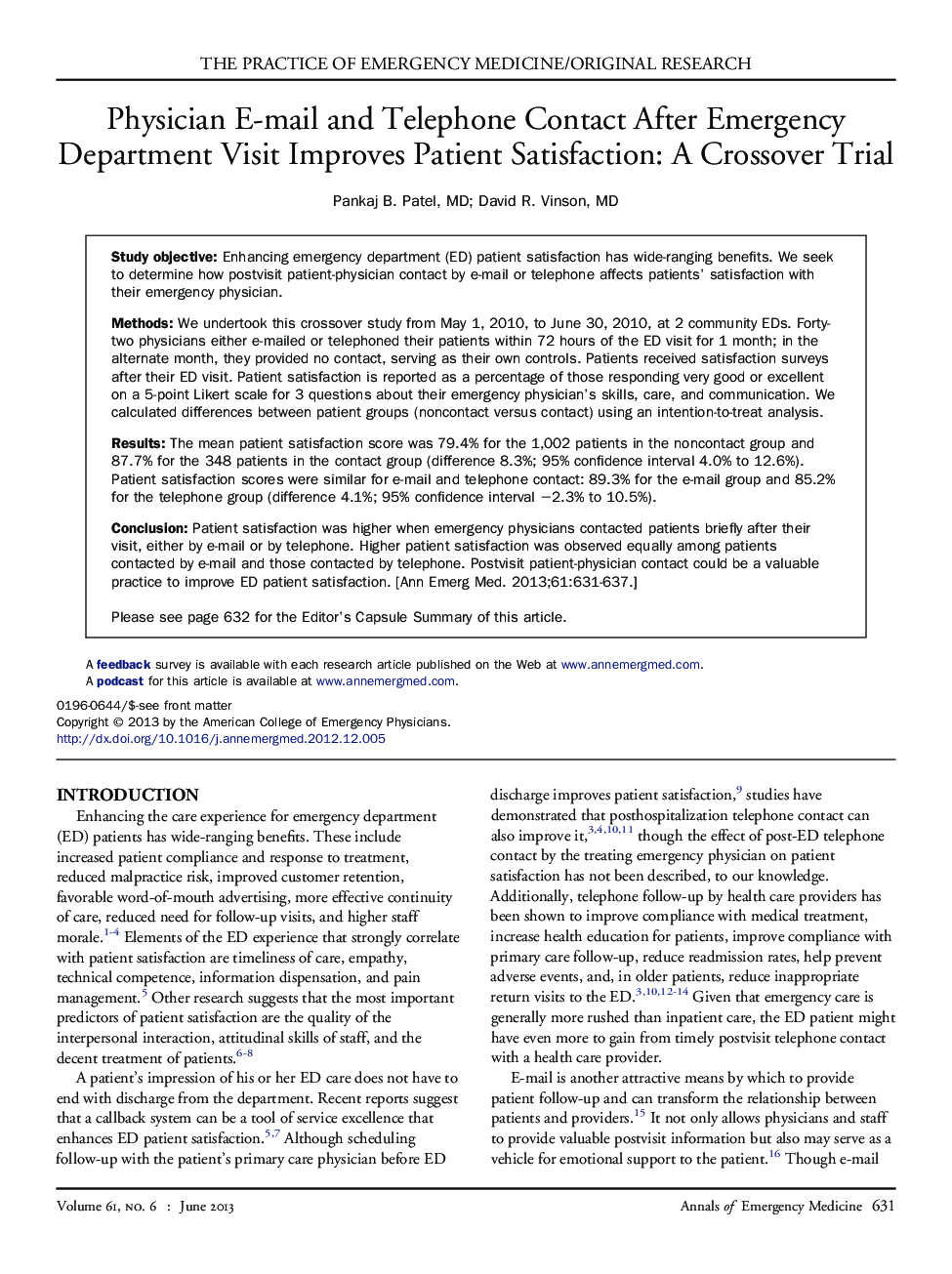| Article ID | Journal | Published Year | Pages | File Type |
|---|---|---|---|---|
| 3230023 | Annals of Emergency Medicine | 2013 | 7 Pages |
Study objectiveEnhancing emergency department (ED) patient satisfaction has wide-ranging benefits. We seek to determine how postvisit patient-physician contact by e-mail or telephone affects patients' satisfaction with their emergency physician.MethodsWe undertook this crossover study from May 1, 2010, to June 30, 2010, at 2 community EDs. Forty-two physicians either e-mailed or telephoned their patients within 72 hours of the ED visit for 1 month; in the alternate month, they provided no contact, serving as their own controls. Patients received satisfaction surveys after their ED visit. Patient satisfaction is reported as a percentage of those responding very good or excellent on a 5-point Likert scale for 3 questions about their emergency physician's skills, care, and communication. We calculated differences between patient groups (noncontact versus contact) using an intention-to-treat analysis.ResultsThe mean patient satisfaction score was 79.4% for the 1,002 patients in the noncontact group and 87.7% for the 348 patients in the contact group (difference 8.3%; 95% confidence interval 4.0% to 12.6%). Patient satisfaction scores were similar for e-mail and telephone contact: 89.3% for the e-mail group and 85.2% for the telephone group (difference 4.1%; 95% confidence interval −2.3% to 10.5%).ConclusionPatient satisfaction was higher when emergency physicians contacted patients briefly after their visit, either by e-mail or by telephone. Higher patient satisfaction was observed equally among patients contacted by e-mail and those contacted by telephone. Postvisit patient-physician contact could be a valuable practice to improve ED patient satisfaction.
